GitHub Copilot Certification
Introduction
GitHub in the SDLC
In this guide, we explore how GitHub Copilot enhances every phase of the Software Development Life Cycle (SDLC), boosting productivity, improving code quality, and accelerating time to market.
Note
GitHub Copilot delivers AI-driven suggestions throughout your SDLC—but its recommendations should always be reviewed and adapted to your team’s standards.
Overview of the Software Development Lifecycle
The Software Development Life Cycle (SDLC) is a repeatable framework for delivering reliable software. It includes six core stages:
| Phase | Purpose |
|---|---|
| Planning | Define objectives, scope, resources, and timeline. |
| Analysis | Gather requirements, user stories, and business goals. |
| Design | Create system architecture, UML diagrams, and specs. |
| Implementation | Write, review, and merge code. |
| Testing & Integration | Validate features, run tests, and integrate components. |
| Maintenance | Monitor performance, fix bugs, and iterate on features. |
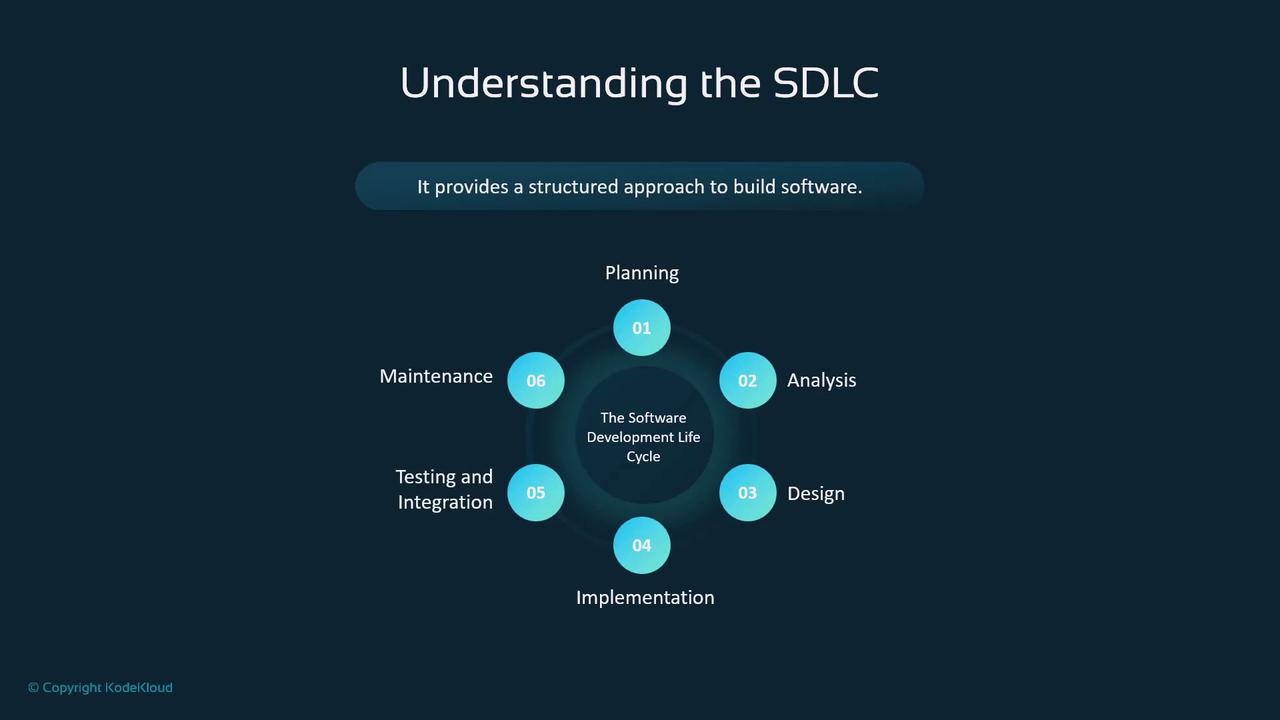
Key Advantages of a Structured SDLC
A well-defined SDLC delivers three major benefits:
- Organized Development
Prevents scope creep and ensures consistent progress. - Defined Milestones
Promotes transparency and stakeholder alignment. - Built-in Quality Control
Embeds testing and validation throughout the process.
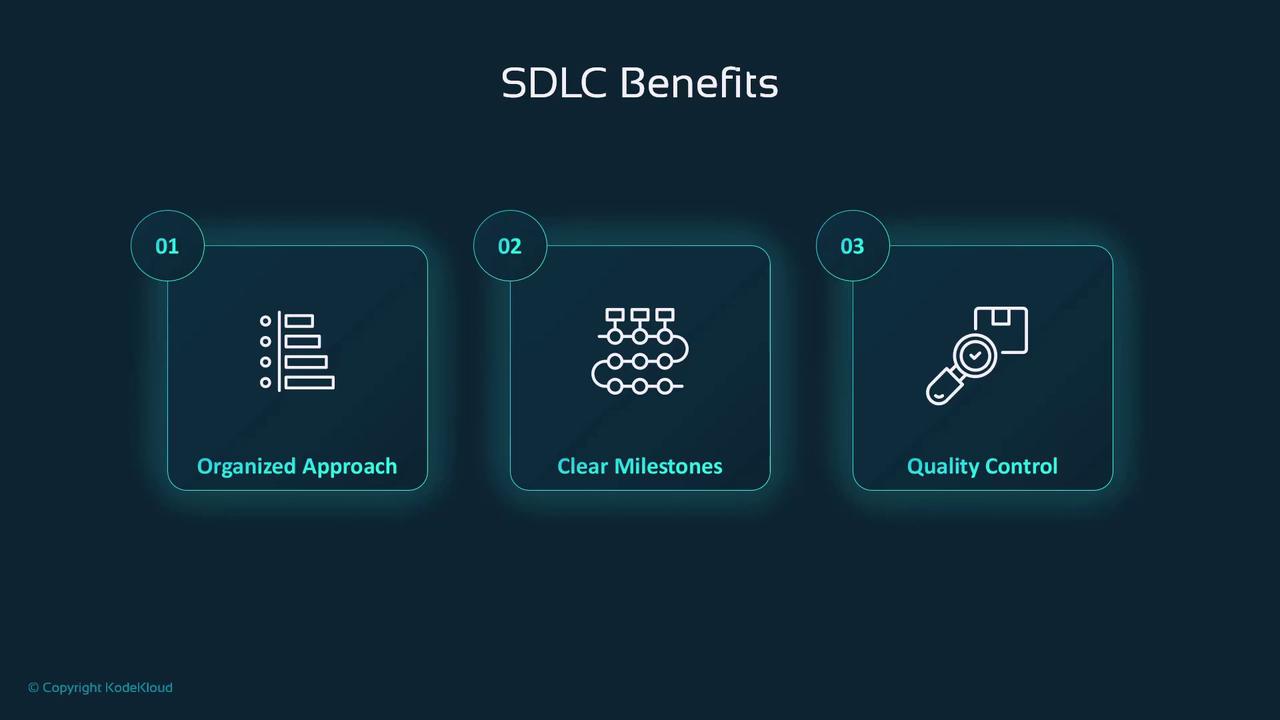
Common Challenges in the SDLC
Even with a structured process, teams often face hurdles:
- Lengthy Documentation
Manual spec creation can delay development. - Skill Disparities
Varying expertise can lead to miscommunication. - Technical Debt
Quick fixes under pressure accumulate future maintenance work.
Warning
Unchecked technical debt erodes code quality and slows down future releases.
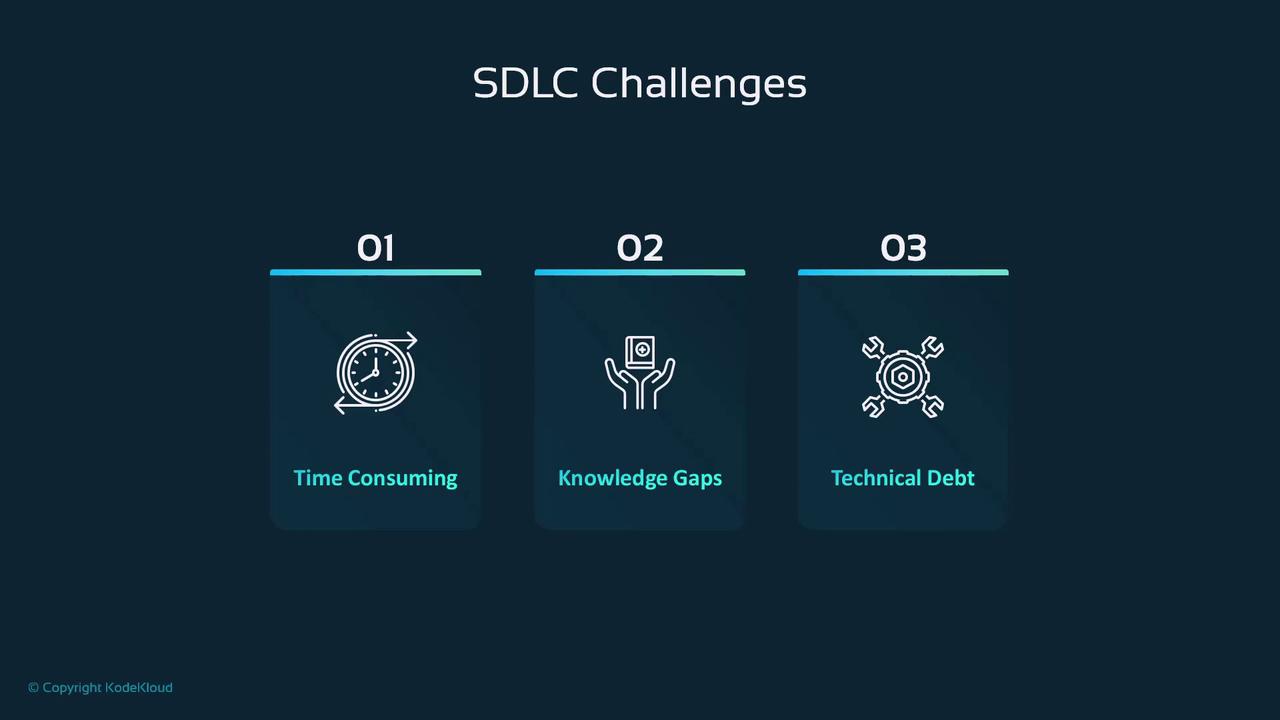
Quantifiable Impact of GitHub Copilot
Organizations using Copilot report significant gains:
| Metric | Improvement |
|---|---|
| Pull Request Volume | +10.6% |
| SDLC Cycle Time | –3.5 hours |
| Developer Job Satisfaction | 90% positive rating |
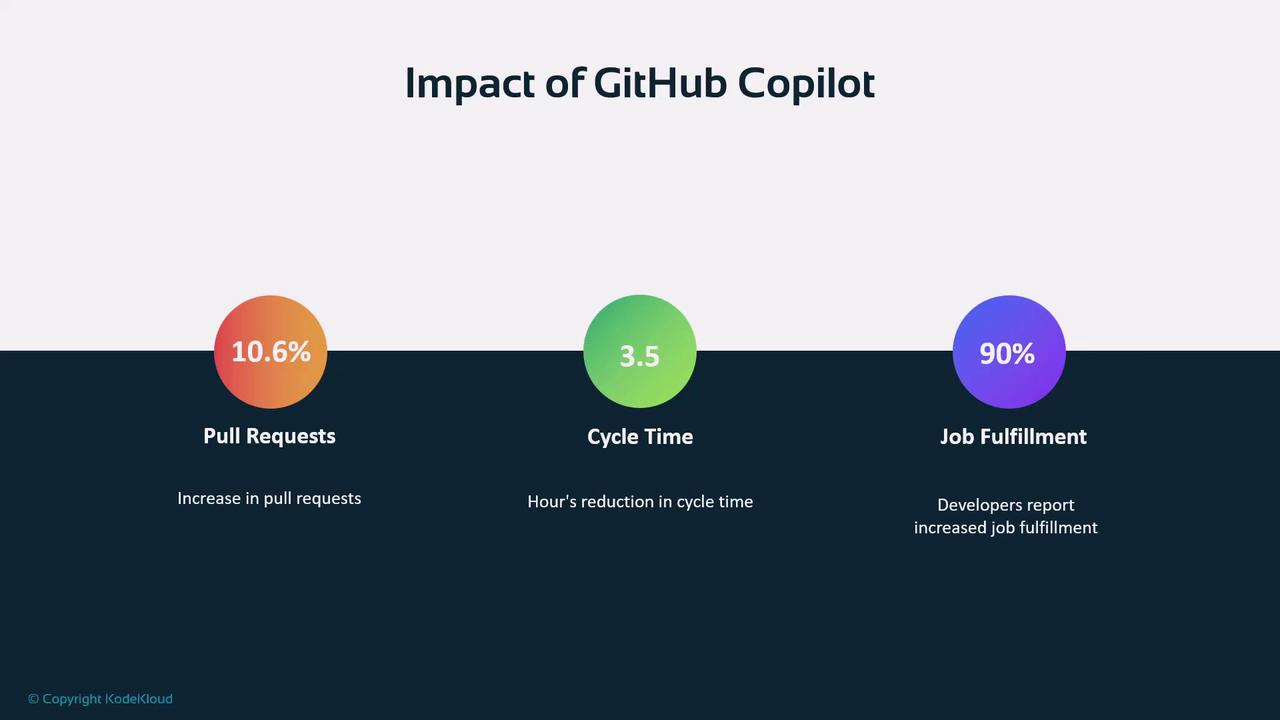
These results highlight how Copilot not only speeds up delivery but also enhances the overall developer experience.
Integrating Copilot in Requirements and Planning
In the Planning and Analysis phases, Copilot helps teams:
- Generate Initial Documentation
Convert plain-language project outlines into structured requirement docs and user stories. - Propose Design Artifacts
Auto-suggest UML diagrams, flowcharts, and component interactions from natural-language prompts.
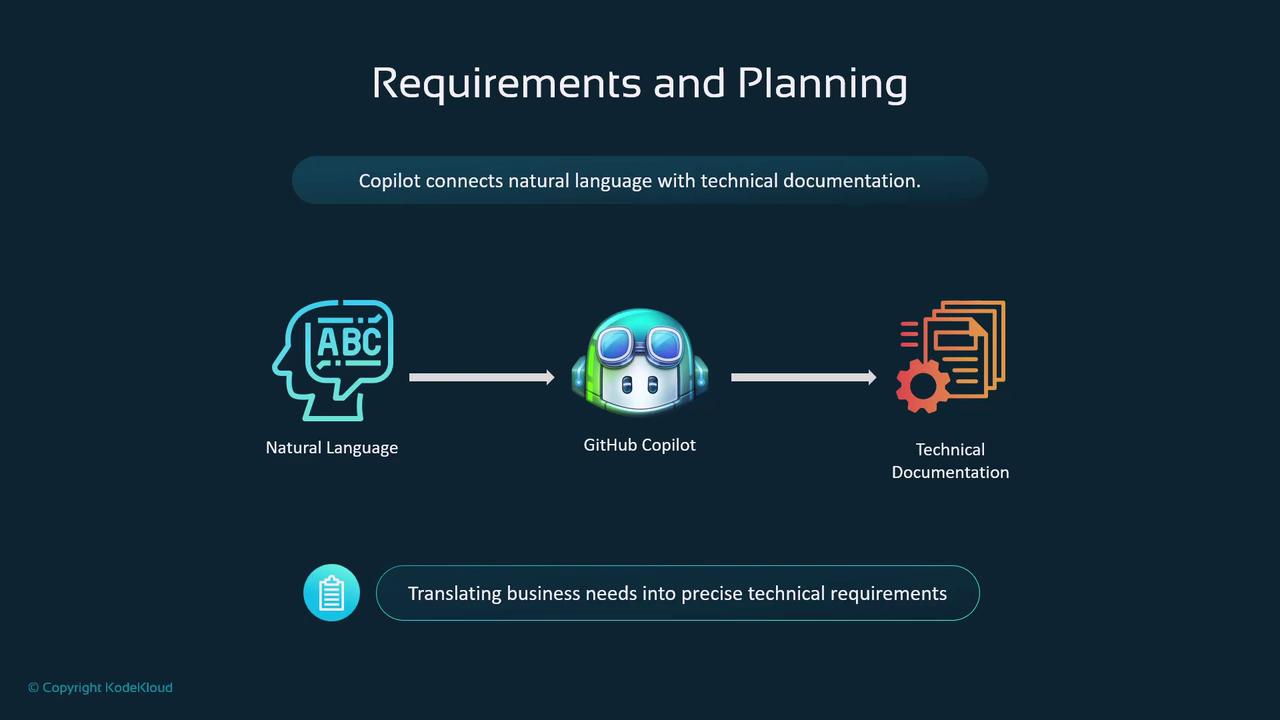
By leveraging Copilot’s natural language processing, you can reduce manual effort and accelerate the transition from concept to detailed design.
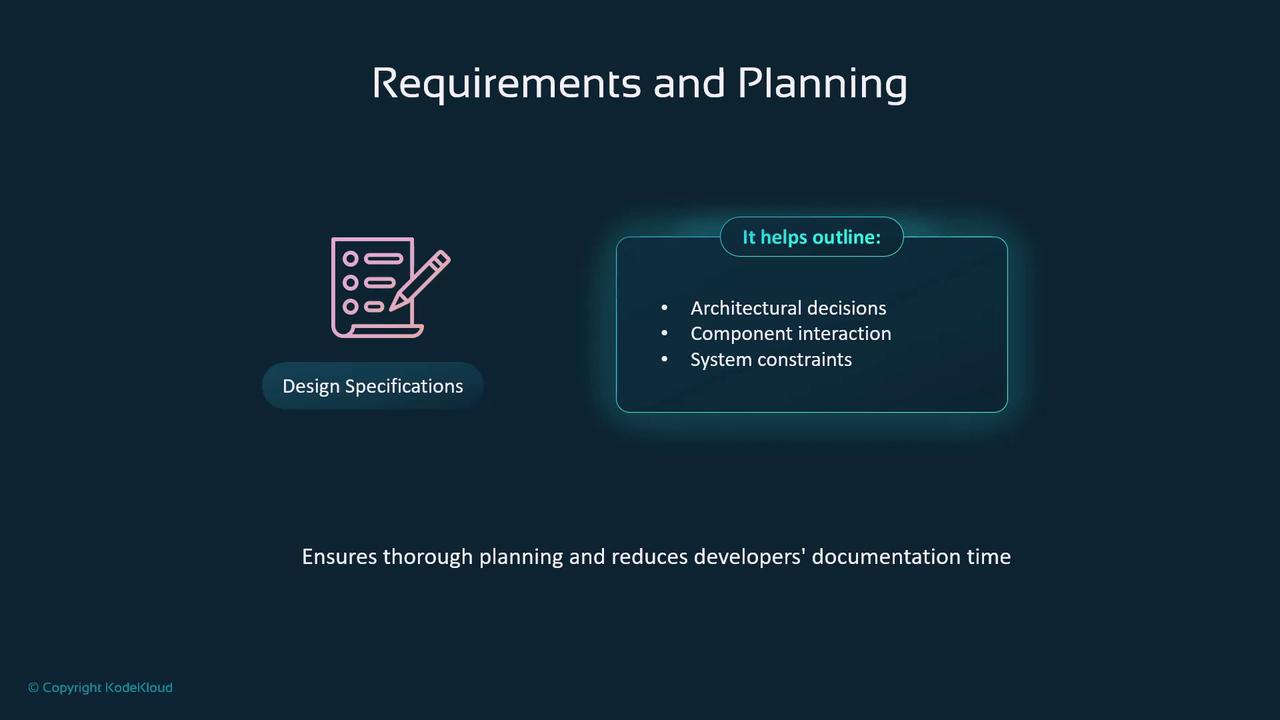
Links and References
Watch Video
Watch video content